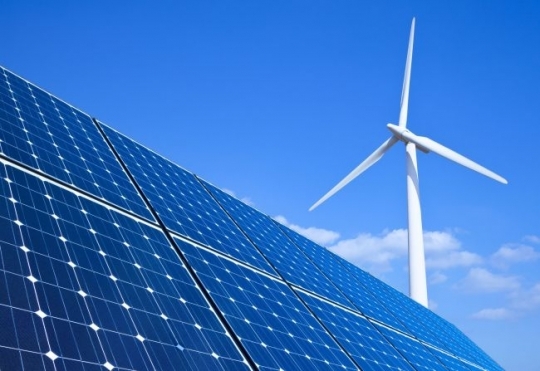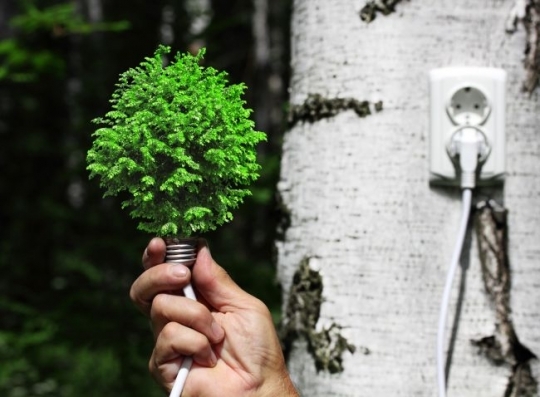[Going Renewable (1)] Korea steps in right direction for renewable energy, but challenges await
By Shin Ji-hyePublished : Feb. 7, 2019 - 14:14
The Korea Herald is publishing a series of articles looking into the South Korean government and businesses quest toward renewable energy. -- Ed.
One year on since the Moon administration vowed to put more emphasis on renewable energy, it still has to address controversy over energy prices and its decision to do away with nuclear power, as well as conflicts with residents near renewable energy facilities.
In December 2017, the government announced “Renewable Energy 3020,” aiming to increase renewable energy’s share of generation capacity to 20 percent from the current 7 percent by 2030, in response to concerns about life-threatening air pollution and demand for cleaner and safer energy. It has allocated funds amounting to 18 trillion won ($16 billion) toward the project.
“We believe the government’s renewable energy policy is going in the right direction in line with the global trend, and there is social consensus on the direction,” said Lee Yong-pil, chief of the Ministry of Trade, Industry and Energy’s new renewable energy policy division.
“Still, challenges remain in the process of achieving the goal. One of the key issues is how to have ‘rational consent’ from residents living near solar and wind power facilities and how to share benefits with them,” Lee said.
Korea far exceeded its goal for last year of installing 1.7 gigawatts of renewable facilities nationwide, but not without opposition.
Residents and environmental groups are protesting, claiming that the new facilities threaten the natural ecosystem and their farming and fishing businesses.
Most recently, the government’s plan to build floating solar power plants in Cheonan, South Chungcheong Province, was scrapped due to opposition by local residents.

Due partly to Korea’s abundance of mountains -- not a perfect geographical feature for generating renewable energy -- the expansion of solar and wind power energy will lead to a rise in electricity costs.
According to the energy plans set in 2017, the expansion of renewable energy to 20 percent would drive energy prices up by 10.9 percent by 2030. But experts doubt the figure and estimate a higher rise.
“Replacing (some of the) relatively cheaper nuclear energy with more expensive renewable energy will inevitably result in electricity price increase. The government will need to gain public consent to achieve the goal,” said Yoo Seung-hoon, a professor at Seoul National University of Science and Technology’s energy policy department.
The cost to purchase a nuclear power energy was 61 won per kilowatt-hour while the cost for the same amount of renewable energy was more than 100 won last year, according to the Korea Electric Power Corp.
The cost to Kepco of purchasing energy rose 8.4 percent in the first half of last year compared to the same period in the previous year as the use of nuclear energy -- as part of the nation’s anti-nuclear move -- was reduced and, instead, the use of relatively more expensive bituminous coal and liquefied natural gas increased.
In order to drive costs down and boost the expansion of renewable energy, the nation’s energy system structure should be reshuffled so as to open the energy market to private companies, some experts say.
Currently, state-run Kepco is the only organization that distributes electricity in Korea. Some nations, including the US, the UK, Germany and Japan, have sought to use competition in the energy market to quickly increase the portion of new renewable energy.
Juan Pablo Osornio, global climate political adviser at Greenpeace, said Korea is losing opportunities because there is no system in place for companies to buy renewable energy.
“For a rapid expansion of renewable energy in Korea, an environment in which corporates can purchase renewable energy should be fostered,” he said.
The government also has to deal with anti-nuclear challenges that have recently become a political hot potato.

The renewable energy 3020 plan aims to increase the portion of renewable energy to 20 percent while reducing the portion of nuclear energy to 23.9 percent from the current 30 percent. The government aims to completely do away with nuclear power energy in the nation by 2082.
The anti-nuclear move has met with strong opposition from the nuclear power industry and opposition parties.
Last week, the nation’s main opposition Liberty Korea Party and the nuclear industry collected more than 300,000 signatures to oppose the anti-nuclear policies, calling for a response from Cheong Wa Dae, in the wake of the government’s decision to stop the construction of two Shin Hanul nuclear power plants in Uljin County, North Gyeongsang Province.
The Liberty Korea Party and Bareun Party said they are in position to move to ultimately stop the nuclear phaseout.
“Going renewable is the right agenda for Korea but the government has to deal with many challenges in the process. The energy issue, however, should not be swayed by politics but should be determined by economic principles as it is an agenda that will play a key role in the future of our lives,” said Kang Seung-jin, a professor at Korea Polytechnic University’s energy graduate school.
By Shin Ji-hye (shinjh@heraldcorp.com)








![[Graphic News] More Koreans say they plan long-distance trips this year](http://res.heraldm.com/phpwas/restmb_idxmake.php?idx=644&simg=/content/image/2024/04/17/20240417050828_0.gif&u=)
![[KH Explains] Hyundai's full hybrid edge to pay off amid slow transition to pure EVs](http://res.heraldm.com/phpwas/restmb_idxmake.php?idx=644&simg=/content/image/2024/04/18/20240418050645_0.jpg&u=20240419100350)






![[From the Scene] Monks, Buddhists hail return of remains of Buddhas](http://res.heraldm.com/phpwas/restmb_idxmake.php?idx=652&simg=/content/image/2024/04/19/20240419050617_0.jpg&u=20240419175937)

![[KH Explains] Hyundai's full hybrid edge to pay off amid slow transition to pure EVs](http://res.heraldm.com/phpwas/restmb_idxmake.php?idx=652&simg=/content/image/2024/04/18/20240418050645_0.jpg&u=20240419100350)

![[Today’s K-pop] Illit drops debut single remix](http://res.heraldm.com/phpwas/restmb_idxmake.php?idx=642&simg=/content/image/2024/04/19/20240419050612_0.jpg&u=)